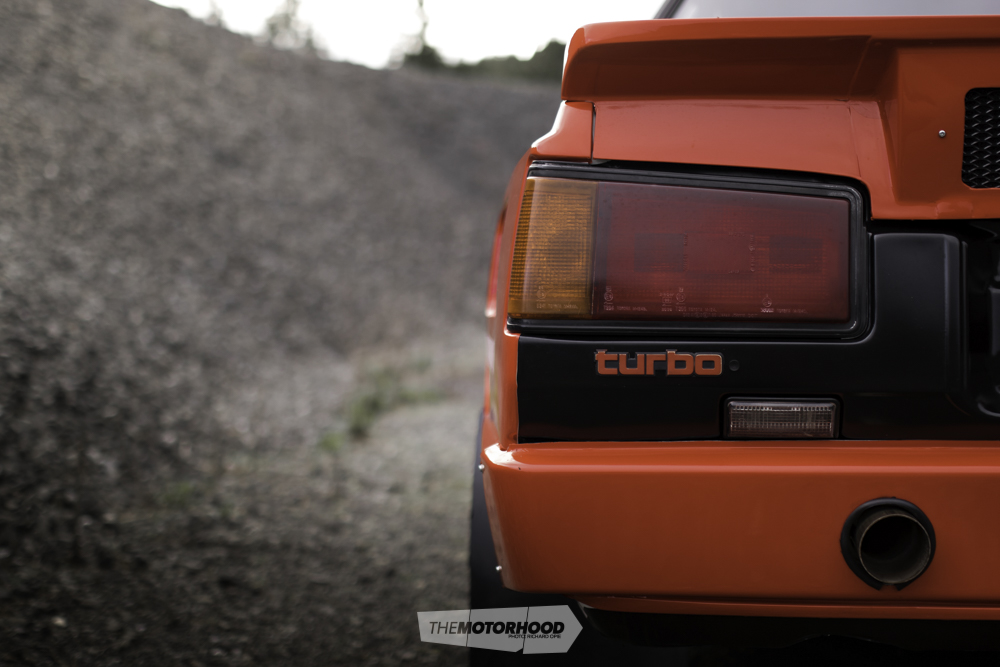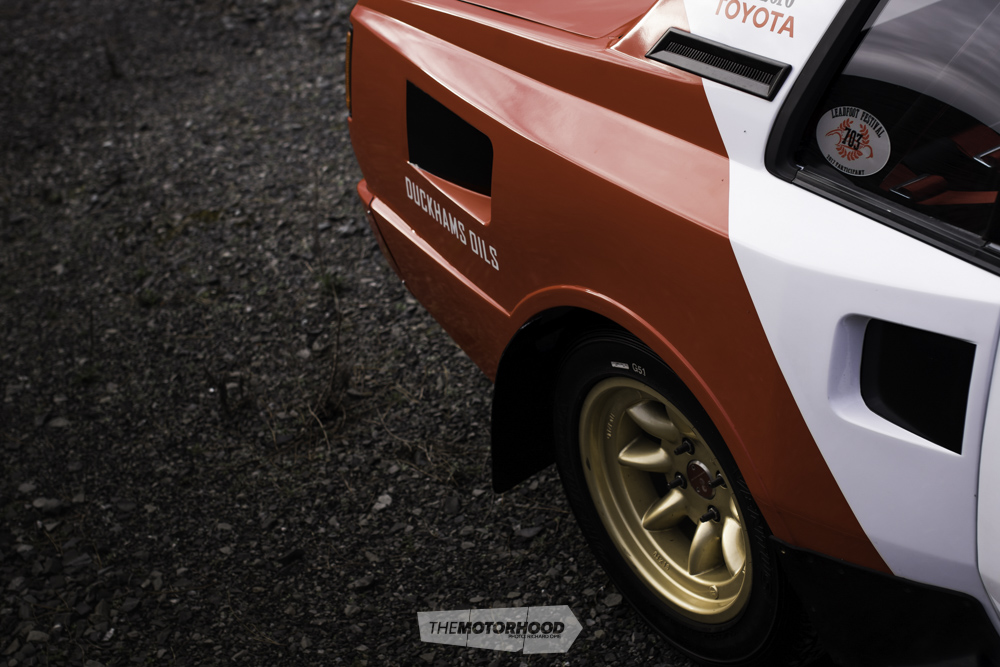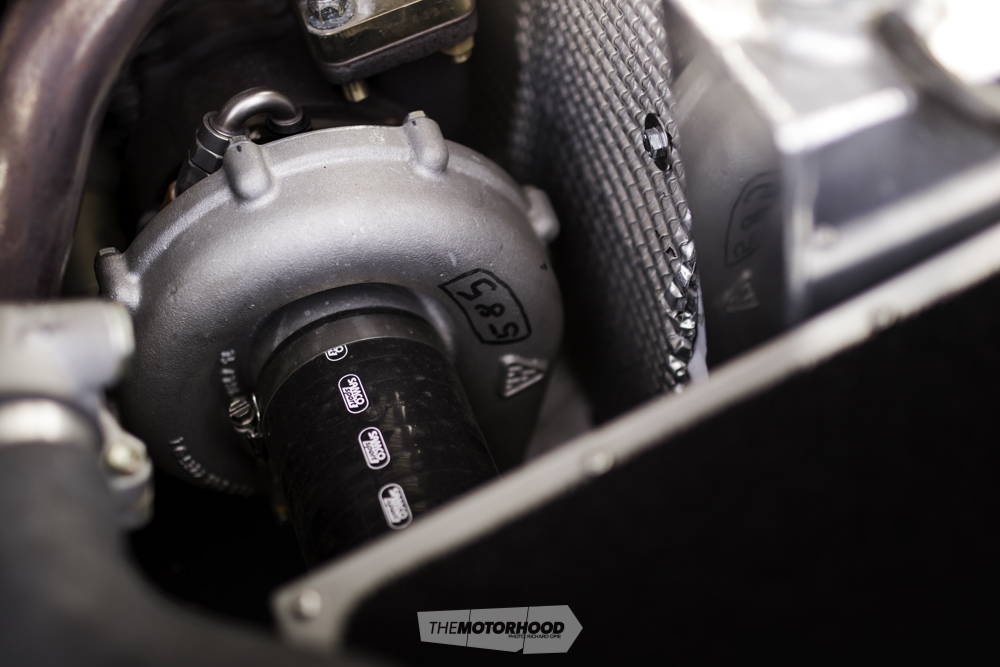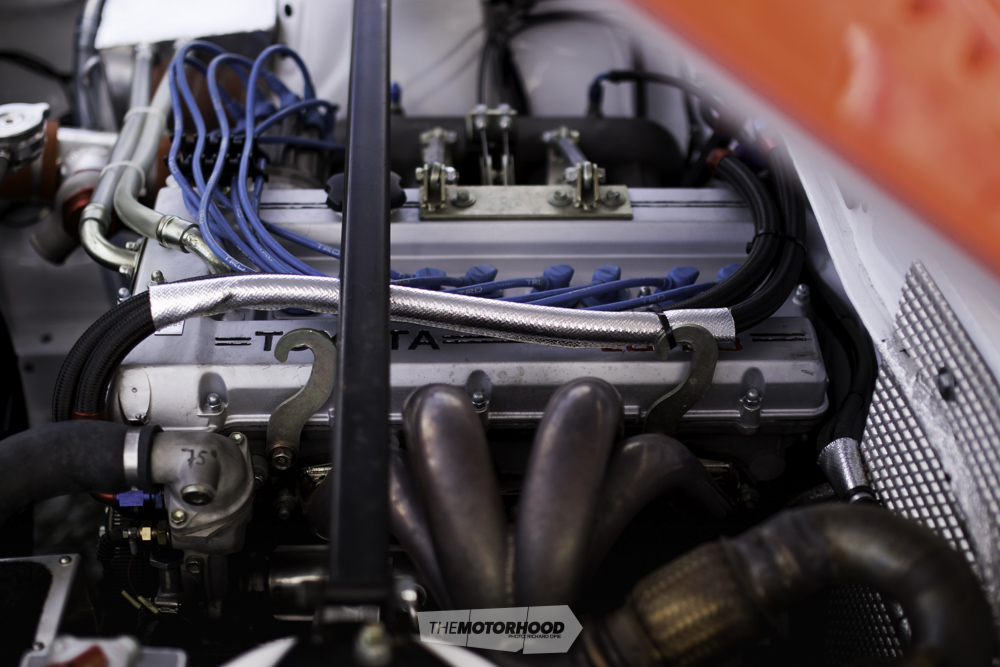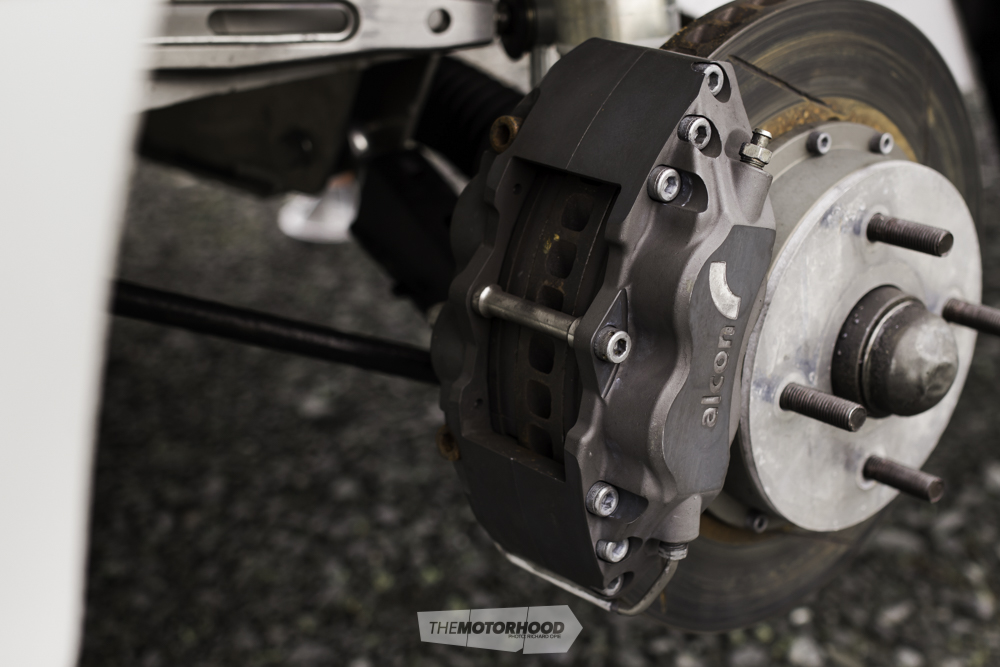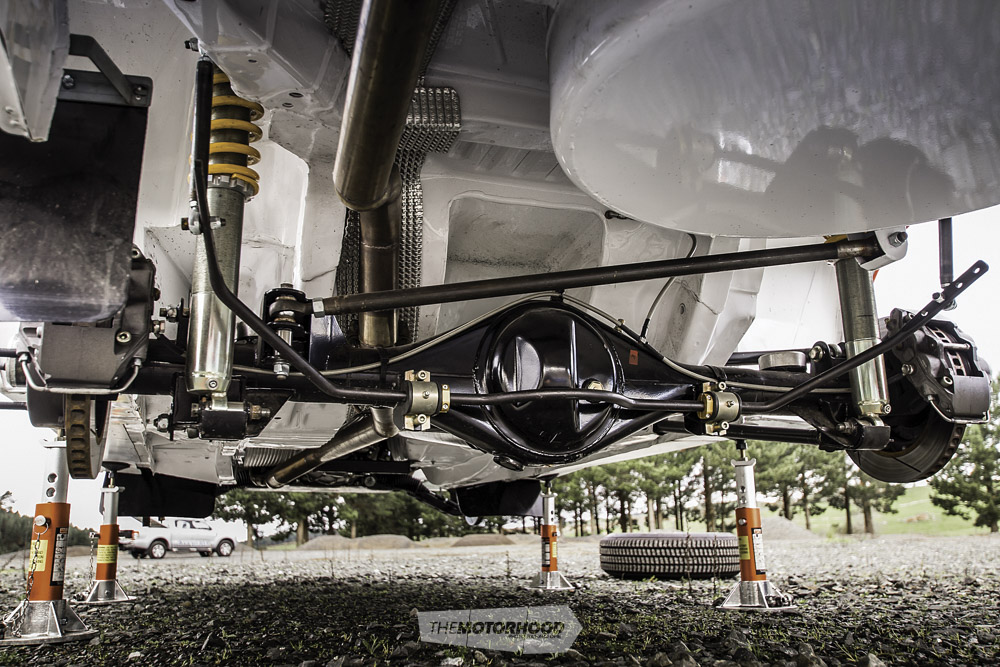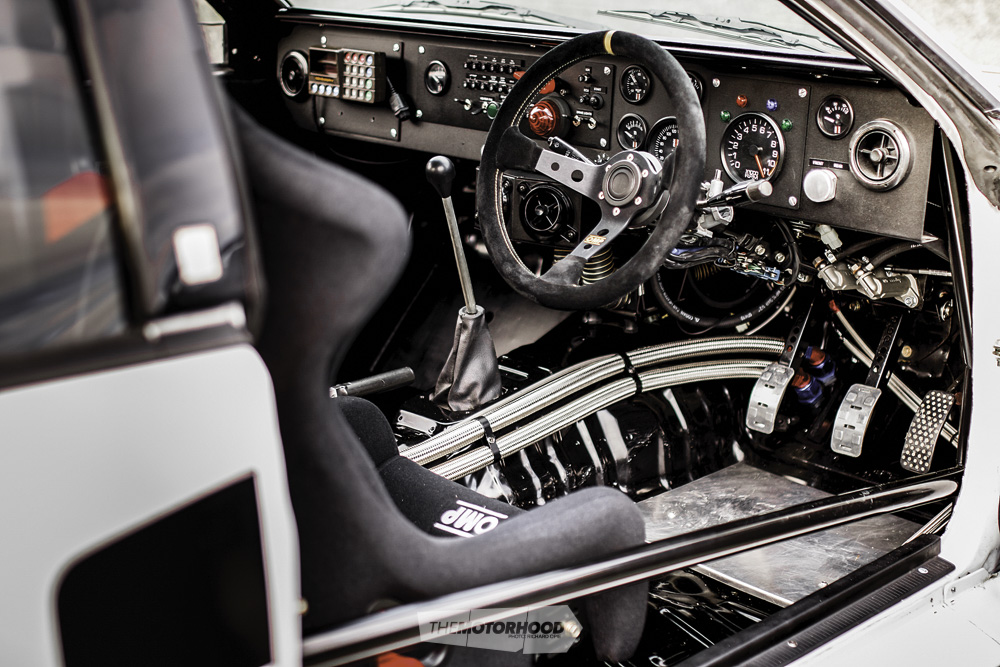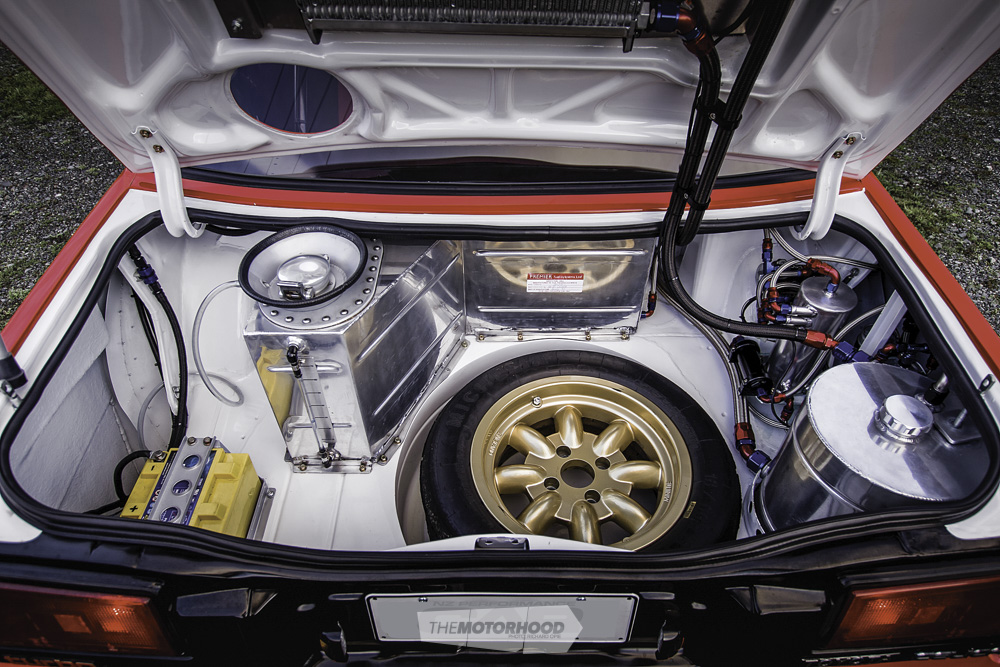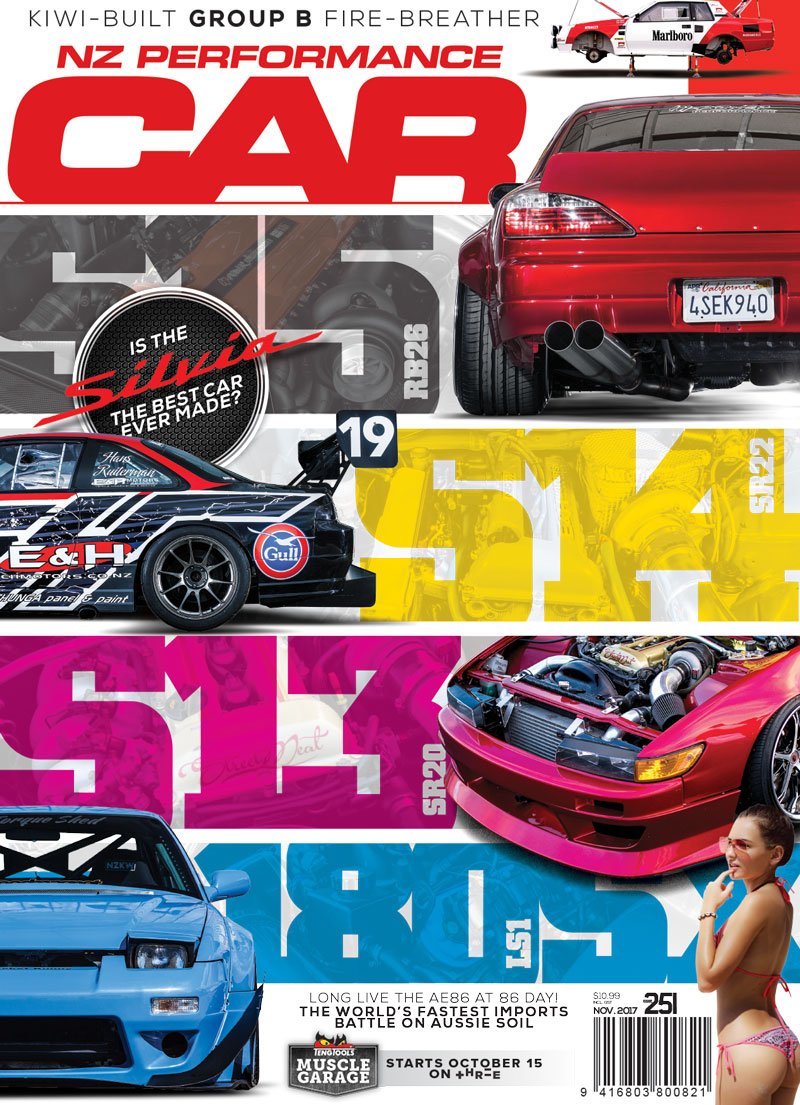Group B rallying took the boundaries and threw them to the wind. For one Kiwi rally fan, the replication of Toyota’s Group B effort recreates the sheer performance of the era and doesn’t skimp on the detail
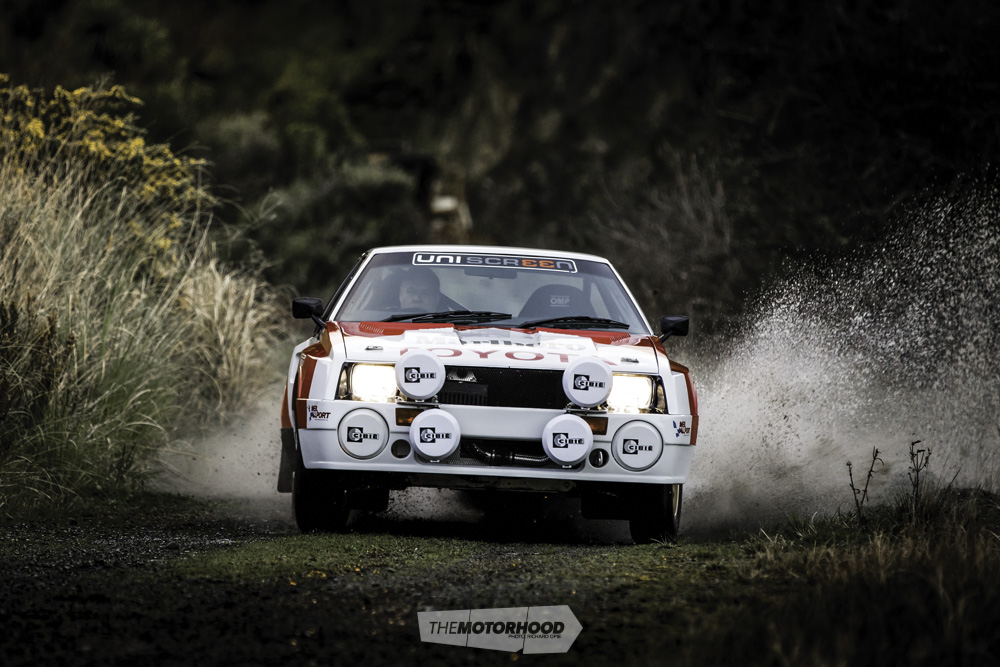
Rallying, it seems, can be divided simply into a couple of different categories — Group B, and then everything else. Banned by the FIA, the class rightly holds a reputation bordering on mythical. There’s no doubt that its legendary status was cemented with the introduction of 4WD and turbocharging — from the guttural growl of the Audi Quattro throughout its evolution, through to the banshee scream of the twin-charged Lancia Delta S4.
By the final season, the 4WD monsters of rallying were pushing around 450kW and accelerating from a standstill to 100kph in less than three seconds. These cars drew crowds like no other, with a spectacle that embodied the very definition of sensory overload — the smell, the sound, and the danger. But that same danger ensured that the cars vanished from the stages virtually overnight following a ban at the end of the 1986 season.
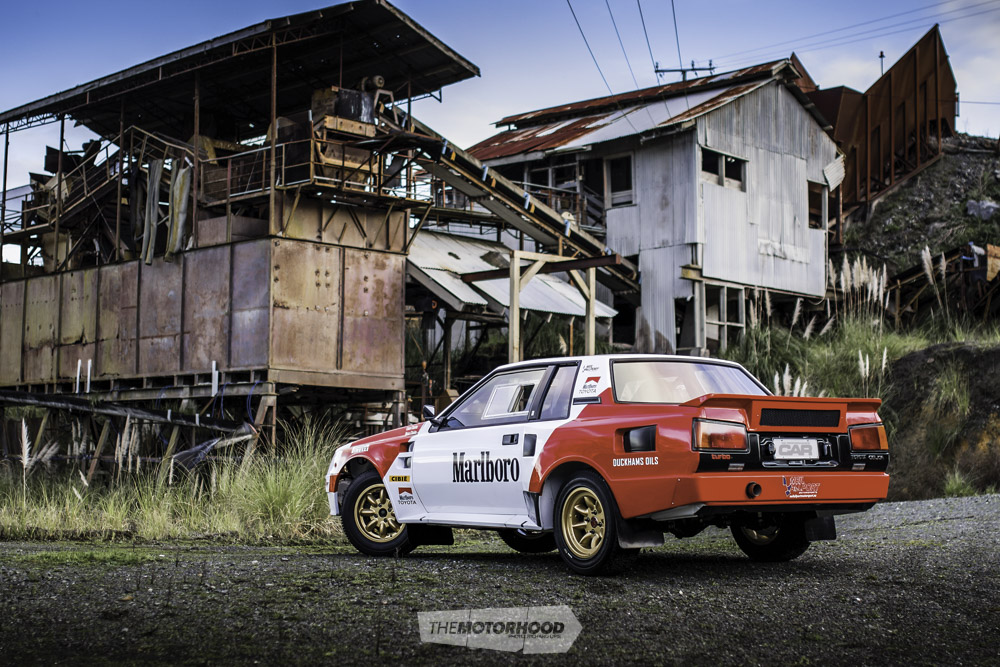
Yet, there I was in 2017, strapped into the passenger seat of one. Or, at least, a car that is a damn-good replication of that experience of sensory overload. The Toyota Celica Twin Cam Turbo, to give it its full name, admittedly wasn’t the most fearsome or competitive of the era, but it did have a niche against the might of the 4WD cars of the Group B years. The Celica’s simple live-rear-axle two-wheel-drive layout carved out six consecutive victories in Africa, taking outright wins in both the Ivory Coast and the Kenyan Safari rallies. These long-distance torture-tests suited the simple, robust nature of the Toyota, building it an indelible reputation for toughness.
Ross Clarke’s road to building the Celica began with a friendship, one that proved pivotal in the creation of such an accurate build. Crewing for friend and Kiwi rallying institution Neil Allport, Ross was soon coerced into acquiring an Escort Mexico in the early ’80s, competing in his share of club events and rally sprints. A one-owner RX-3 coupe followed, converted to a caged rally weapon with a Possum Bourne–built engine. But then an incident in the Maramarua Forest consigned the car to scrap and Ross to hospital with a broken back.
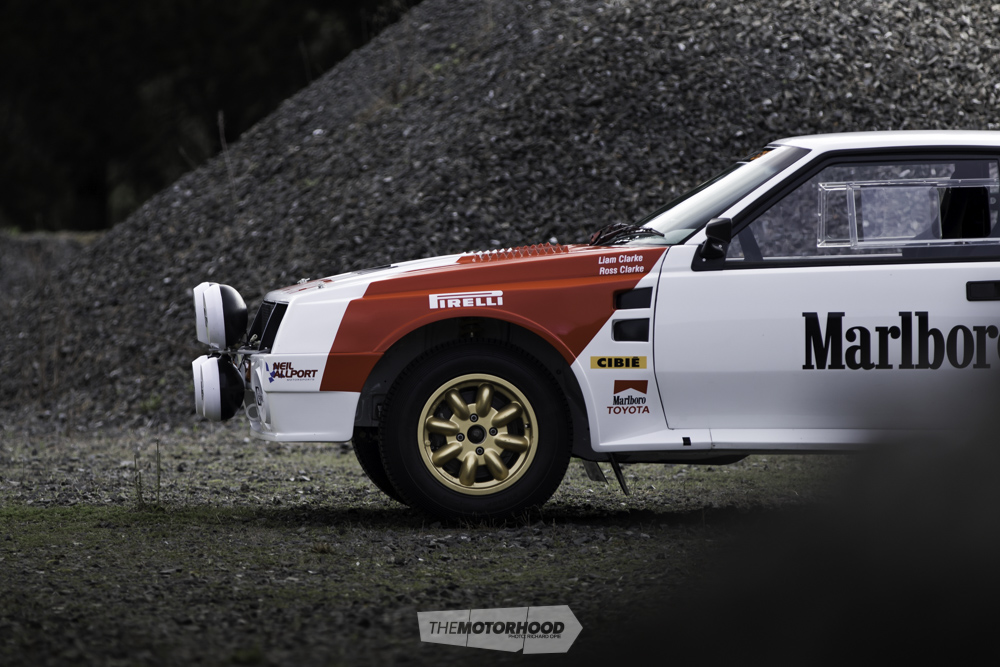
While he sat out rallying from then on (aside from the 1989 season at the wheel of a BFMR Mazda), Ross continued to crew for Allport, perhaps importantly, through the Group B years. It’s a legacy that Ross confirms provided the impetus to embark on his own build some two decades later, although, at the time, he confirms that he thought his aspirations would extend no further than something more easily attainable, like the Group B-spec RX-7 of Allport he wrenched on.
With seven genuine cars remaining of the 30 or so Celica’s built, finding and buying the real deal is next to impossible. And while it’s easy to write Ross’ immaculate example off as ‘just another replica’, the truth is that this car is strikingly close to the real thing. Beginning life as a 1981 SA60 Celica with a humble 1S-U resting between the strut towers, the initial plan was a more modest Group 4–style build, with a naturally aspirated two-litre and 16-valve head, to take on the BDA Escorts in classic rallying. The story of things getting out of hand is all too common, and, somewhere along the way, it was pointed out that, hey, a proper ex-works Group B engine can be sourced, and, by the way, there’s these guys in Finland who’ve restored a couple of these with excellent documentation of their builds … The Celica’s future as one of the planet’s most faithful Group B replicas was sealed.
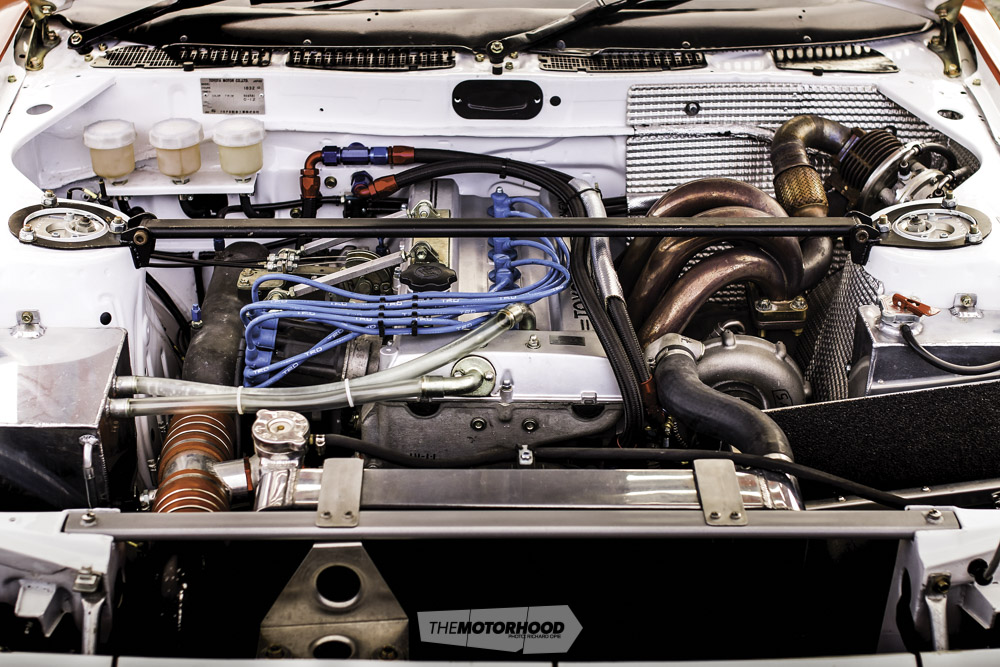
Yeah, that’s a genuine ex-works TRD 396 Evolution engine. Displacing 2090cc and breathing through a big KKK turbo, the sound is something else: 9000-plus rpm was not unheard of during 1980s competition
That ‘proper’ ex-works engine is undoubtedly the jewel in the crown of Ross’ build. Displacing 2090cc, Ross’ 396 Evolution engine is not only the genuine article but was also sourced through the very engineer who built these in the Group B period. Gerd Dicks, proprietor of Rallye Engine, worked with Team Toyota Europe (TTE) from the teams’ inception in 1972 right through to 2002, when he was involved in Toyota’s Formula 1 programme. With an inventory of parts that any Toyota motorsport geek would dribble over, Gerd had, among his stock of historic TTE spares, a 396E engine, serial number 111. Built in March ’85, engine 111 saw service in the ’85 Safari, before being implanted into Juha Kankkunen’s Celica for the ’85 1000 Lakes Rally in Finland. Ultimately, the engine landed in the Middle East as a spare for Mohammad bin Sulayem and returned to TTE following the abandonment of Group B.
Now bolted to the correct cross-member in Ross’ car, everything mechanical is as per 1985 — the gleaming stainless manifold feeding the big KKK K27 turbo, the magnesium quad-throttle plenum and inlet, even the forged internals refreshed by Gerd before crating the engine up and sending it to New Zealand. The key difference in running the engine is the ECU. In period, an erasable programmable read-only memory (EPROM)–type Nippon Denso unit was used, which, these days, is an expensive, comparatively low-tech means of ensuring that things run right. Ross chose a Life Racing F88 RS6 ECU, not especially common in this part of the world but a serious motorsport unit. Ross’ Celica drives better than the originals ever did; a virtue confirmed by Gerd, who holidayed in New Zealand earlier this year and helped Ross with the car’s debut at the Leadfoot Festival.
Second to the engine are the body panels. Supplied by Mäkelä Auto Tuning (MAT) — those guys in Finland — the panels are a mould of the genuine Group B gear. Millimetre-perfect in every respect, the angular boxed arches, truncated rear, and stubby nose (the factory Celica had pop-up lights), screaming function rather than form. Coated in the Marlboro livery of bin Sulayem’s Middle Eastern cars, the whole aesthetic is unequivocally 1980s.
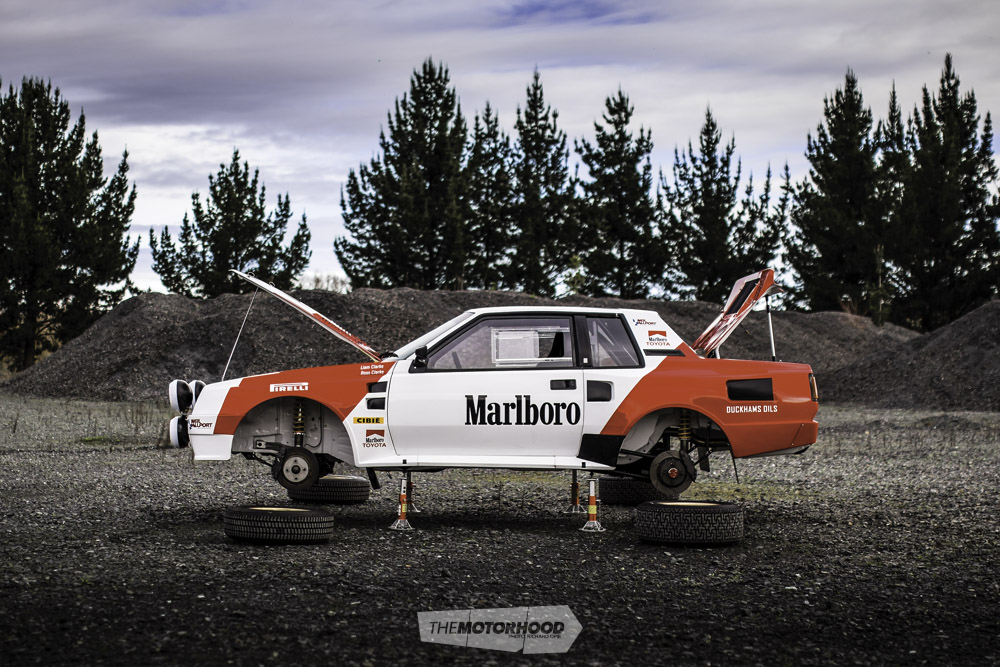
Also from Finland is the Lampola gear set, fitted into a W57 Toyota box. Sporting identical ratios to the near-unattainable Hewland used in period, the straight-cut dog-engagement box permits quicks shifts. That authentic whine doesn’t go amiss either.
Then there’s the rest. With the help of MAT’s 1100-photo-strong restoration gallery, Neil Allport Motorsport was entrusted with the shell. Inside, the Celica is faithful to its 1984 inspiration, featuring a functional dash devoid of digital and chock full of analogue gauges and indicator lights. Of course, a period-correct Halda Rally Computer keeps the co-driver occupied. The cage is as per period, albeit constructed in steel and not the alloy that was favoured during the 1980s before being outlawed.
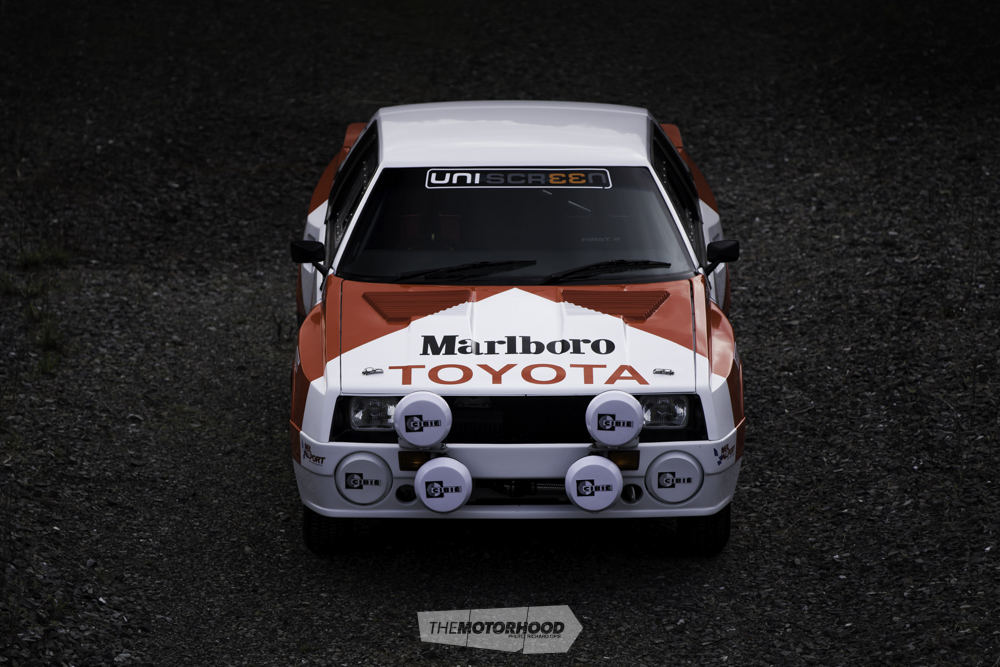
The panels are as close to genuine as you’ll get, with moulds taken from a proper Group B Toyota and reproduced for Ross’ car. It’s all angles, vents, and bulges — the essence of Group B rally styling
Aussie suspension master MCA supplied Safari-spec uprights, ensuring the custom Toyota G-series diff keeps on putting down power. Fitted with Endevour Engineering 32mm axles and floating hubs, the diff mimics the Group B four-link set-up. Finishing off the Celica’s running gear are the four-pot Alcon brakes at either end, clamping 295mm vented rotors hiding behind 15-inch Minilite alloys.
They say that it’s all in the details, and that’s something that Ross’ example has in plentiful supply, from bumper to bumper. Here in New Zealand, it’s about as close as you’ll get to a true Group B experience; a genuine throwback to a time when the pace of development outshone the pace of the cars. It’s an experience that Ross describes by saying, “Everything is right. But the horsepower just gets you, and you wonder … how am I going to tame this?” It’s an exciting journey ahead, both for Kiwi rally fans and for Ross himself. This is Group B.
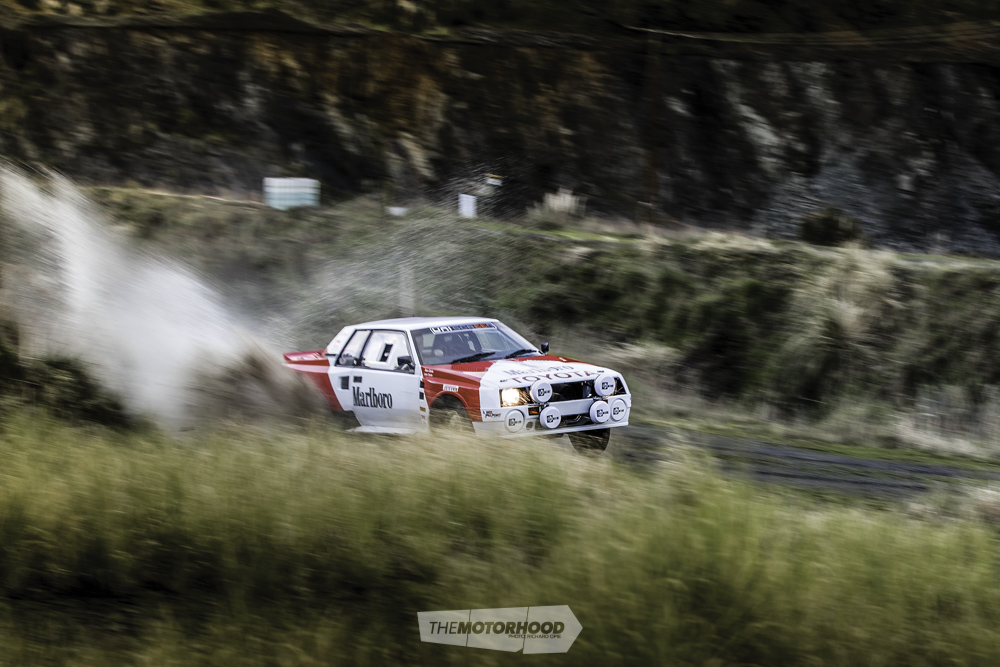
Ross Clarke
Age: Old enough to have seen Group B back in the day
Location: Auckland
Occupation: Director
Build time: Five years
Length of ownership: Five years
Thanks: Neil Allport at Neil Allport Motorsport, Shannon Mills at Mills Collision Repair Centre, Richard Moss at Motorsport Electronics, Gerd Dicks at Rallye Engine, Tim Barwell at The Krysler Shop, Alister Wickens, Paul McCarthy at Plastic Construction, Jason Swan at Auckland Performance Tuning
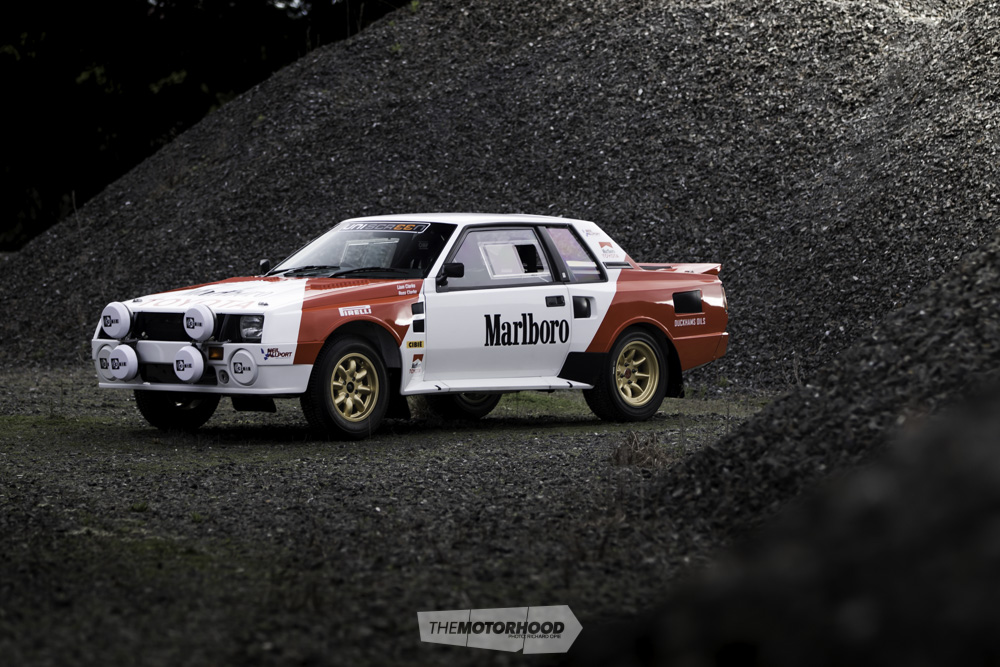
1984 Toyota Celica Turbo (TA64)
Heart
ENGINE: TTE built block No. 111 396 Evolution, 2090cc, four-cylinder
BLOCK: TTE forged pistons, TTE lightened rods, TTE dry sump
HEAD: TTE built
INTAKE: Custom air-box, custom intercooler, magnesium plenum chamber
EXHAUST: Stainless-steel 73mm downpipe, 65mm stainless straight-through
TURBO: KKK K27, TTE stainless manifold
WASTEGATE: TTE
FUEL: 83-litre fuel tank, 1.5-litre surge tank, twin Facet high-volume low-pressure pumps, twin Bosch main pumps, Speedflow AN fittings
IGNITION: Eight Nippon Denso ND31 spark plugs, TTE leads
ECU: Life Racing F88RS6 32MB
COOLING: PWR alloy radiator, PWR 14-inch fan
EXTRA: Custom-made oil catch-can, custom-made header tank, brake/clutch reservoirs
Driveline
GEARBOX: Toyota W57, Lampola five-speed straight-cut gear set (1:1 fifth)
CLUTCH: Alcon twin-plate
FLYWHEEL: TTE lightened
DIFF: Cusco 1.5-way plate limited-slip, Toyota G-series eight-inch housing, Endeavour Engineering floating hubs
Support
STRUTS: (F) MCA coilovers, 200-pound King springs;
(R) MCA coilovers, 150-pound King springs
BRAKES: Adjustable pedal box; (F) Alcon four-pot calipers, 295x28mm two-piece rotors; (R) Alcon four-pot calipers, 295x25mm two-piece rotors; hydraulic handbrake
EXTRA: 15mm front sway bar, adjustible rear sway bar, adjustable four-link, adjustible panhard
Shoes
WHEELS: (F) 15×6-inch Minilite, (R) 15×8-inch Minilite
TYRES: Michelin 186/60R15
Exterior
PAINT: Toyota W55 white by Mills Collision Repair Centre in Hamilton
ENHANCEMENTS: TTE Group B bodykit, livery applied by Sign Formula
Interaior
SEATS: OMP RST, Schroth harnesses
STEERING WHEEL: 350mm OMP
INSTRUMENTATION: Stack gauges
Performance
POWER: 246kW (low boost) / 305kW (high boost)
BOOST: 10psi/16psi
FUEL: 100 octane (avgas)
TUNER: Jason Swan at Auckland Performance Tuning
This article originally appeared in NZ Performance Car issue No. 251 — get your grubby mitts on a print copy by clicking the cover below:





